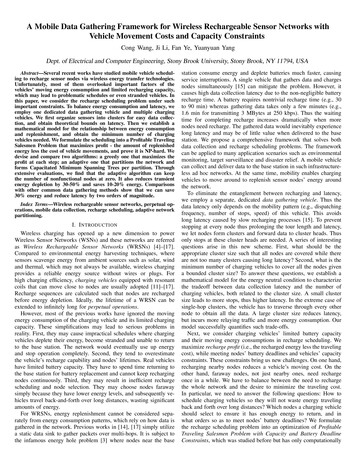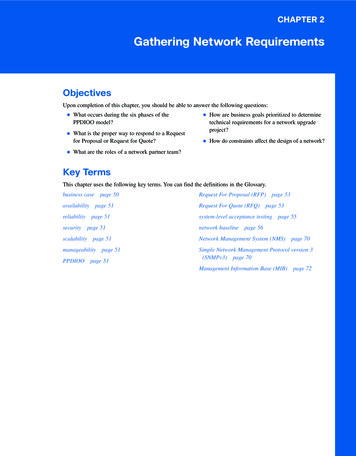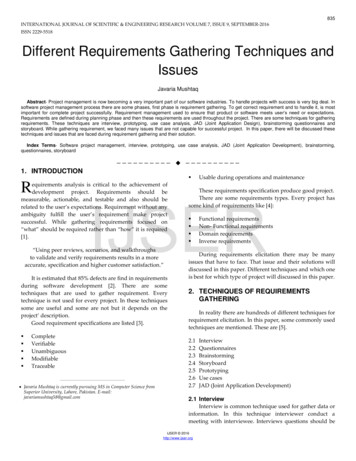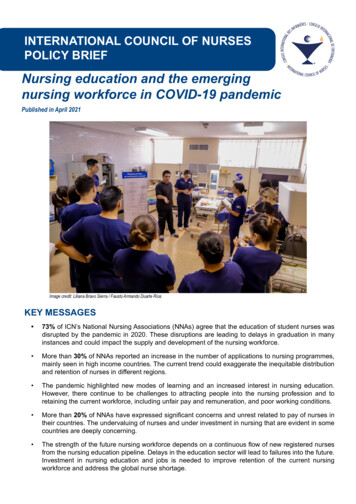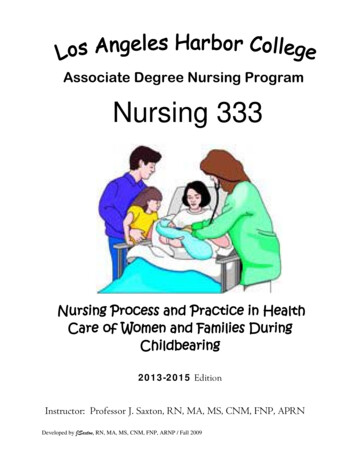
Transcription
PHYSICAL ASSESSMENT EXAMINATION STUDY GUIDENursing Assessment1. Part of Nursing Process2. Nurses use physical assessment skills to:a) Obtain baseline data and expand the data base from which subsequent phases of thenursing process can evolveb) To identify and manage a variety of patient problems (actual and potential)c) Evaluate the effectiveness of nursing cared) Enhance the nurse-patient relationshipe) Make clinical judgmentsGathering DataSubjective data - Said by the client (S)Objective data - Observed by the nurse (O)Document: SOAPIERAssessment Techniques:The order of techniques is as follows (Inspect – Palpation – Percussion - Auscultation) except for theabdomen which is Inspect – Auscultation – Percuss – Palpate.A. Inspection – critical observation *always first*1. Take time to “observe” with eyes, ears, nose (all senses)2. Use good lighting3. Look at color, shape, symmetry, position4. Observe for odors from skin, breath, wound5. Develop and use nursing instincts6. Inspection is done alone and in combination with other assessment techniquesB. Palpation – light and deep touch1. Back of hand (dorsal aspect) to assess skin temperature2. Fingers to assess texture, moisture, areas of tenderness3. Assess size, shape, and consistency of lesions and organs4. Deep 5-8 cm (2-3”) deep; Light 1 cm deepC. Percussion – sounds produced by striking body surface1. Produces different notes depending on underlying mass (dull, resonant, flat, tympanic)2. Used to determine size and shape of underlying structures by establishing their borders andindicates if tissue is air-filled, fluid-filled, or solid3. Action is performed in the wrist.D. Auscultation – listening to sounds produced by the body1. Direct auscultation – sounds are audible without stethoscope2. Indirect auscultation – uses stethoscope3. Know how to use stethoscope properly [practice skill]4. Fine-tune your ears to pick up subtle changes [practice skill]5. Describe sound characteristics (frequency, pitch intensity, duration, quality) [practice skill]6. Flat diaphragm picks up high-pitched respiratory sounds best.7. Bell picks up low pitched sounds such as heart murmurs.8. Practice using BOTH diaphragmsPage 1 of 35Adapted from the Kentucky Public Health Practice Reference, 2008 andJarvis, C, (2011). Physical examination & health assessment. (6th Ed). Elsevier: St. Louis.MO.by Wright State University on May 28, 2012 for the NLN Assessment Exam for Credit by Exam Test Out – updated November 2012
PHYSICAL ASSESSMENT EXAMINATION STUDY GUIDEGeneral AssessmentA general survey is an overall review or first impression a nurse has of a person’s well being. This isdone head to toe, or cephalo-caudal, lateral to lateral, proximal to distal, and front to back. Generalsurveying is visual observation and encompasses the following.AppearanceBody structure/mobilityBehaviorappears to be reported age;sexual development appropriate;alert & oriented;facial features symmetric;no signs of acute distressweight and height within normal range (refer to Center for Disease Controland Prevention (CDC) Body Mass Index (BMI) [adult] or BMI-for-age andgender forms [children]);body parts equal bilaterally;stands erect,sits comfortably;gait is coordinated;walk is smooth and well balanced;full mobility of jointsmaintains eye contact with appropriate expressions;comfortable and cooperative;speech clear;clothing appropriate to climate;looks clean and fit;appears clean and well-groomedDeviations from what would generally be considered to be normal or expected should be documentedand may require further evaluation or action, including a report and/or referral.Standardized and routine screening such as audiometric screening, scoliosis and vision screeningusing the Snellen Test are usually discussed in General Survey *****Health HistoryA patient history should be done as indicated by the age specific prevention guidelines, usually set forthby Center for Disease Control and Prevention (CDC), American Medical Association, AmericanAssociation of Pediatrics, and National Association of Pediatric Nurse Practitioners. The HealthyPeople website (www.healthypeople.gov) provides an excellent source to determine benchmarks forhealthy living across the life span.A comprehensive history, including chief complaint or reason for the visit, a complete review ofsystems, and a complete past family and/or social history should be obtained on the first encounter witha patient, regardless of setting and by a registered nurse. The history should be age and sexappropriate and include all the necessary questions to enable an adequate delivery of servicesaccording to prevention guidelines, scope of practice, patient need, visit requirement, and/or request.Usually, completing a provider based Health History and Physical Examination Form will assist in theassessment of the patient’s past and current health and behavior risk status. Certain health problems,which may be identified on a health history, are more common in specific age groups and gender.Page 2 of 35Adapted from the Kentucky Public Health Practice Reference, 2008 andJarvis, C, (2011). Physical examination & health assessment. (6th Ed). Elsevier: St. Louis.MO.by Wright State University on May 28, 2012 for the NLN Assessment Exam for Credit by Exam Test Out – updated November 2012
PHYSICAL ASSESSMENT EXAMINATION STUDY GUIDEAn interval history (including an update of complaints, reason for visit, review of systems and pastfamily and/or social history) should be done. Usually family health histories are completed across threegenerations looking specifically for patterns in genetic issues that negatively impact quality of life.The health history gives picture of the patient’s current health and behavior risk status. Additionalinformation than what is on a form may be required depending on the specialized service(s) to beprovided or if the person presents with special needs or conditions. So a health history maybe may beproblem focused, expanded problem focused, detailed, or comprehensive. Regardless, documentationmust be completed for each visit and/or assessment.Mental status evaluation may be done while doing health history (see neuro ***Physical ExaminationA comprehensive physical examination should be performed according to age specific preventivehealth guidelines. American Medical Association clinical practice guidelines recognize the followingbody areas and organ systems for purpose of the examination: Body Areas: Head (including the face); Neck; Chest (including breasts and axillae); Abdomen;genitalia, groin, buttocks; Back (including spine); and each extremity. Organ Systems: Constitutional (vital signs, general appearance), Eyes, Ear, Nose, Throat;Cardiovascular; Gastrointestinal; Genitourinary; Musculoskeletal; Dermatological; Neurological;Psychiatric; Hematological/lymphatic/immunological Integumentary: Both overall body and organ systems should have skin assessments integratedinto them. Integument includes skin, hair and nails.Normal and abnormal findings should be recorded on a health history and physical examination Body measurements include length or height, weight, and head circumference for children from birth to36 months of age. Thereafter, body measurements include height and weight. The assessment ofhearing, speech and vision are also measurements of an individual’s function in these areas. TheDenver Development Screening Test measures an infant’s and young child’s gross motor, language,fine motor-adaptive and personal-social development milestones. If developmental delay is suspectedbased on an assessment of a parent’s development/behavior concern or if delays are suspected after ascreening of development benchmarks, a written referral is to a physician or pediatric nurse practitioneris imperative.A patient’s measurements can be compared with a standard, expected, or predictable measurement forage and gender. Deviation from standards helps identify significant conditions requiring closemonitoring or referral to a physician or pediatric nurse practitioner.The significance of measurements and actions to take when they deviate from normal expectations areage-specific.Page 3 of 35Adapted from the Kentucky Public Health Practice Reference, 2008 andJarvis, C, (2011). Physical examination & health assessment. (6th Ed). Elsevier: St. Louis.MO.by Wright State University on May 28, 2012 for the NLN Assessment Exam for Credit by Exam Test Out – updated November 2012
PHYSICAL ASSESSMENT EXAMINATION STUDY GUIDEHow to measure Height:1. Obtain height by measuring the recumbent length of children less than 2 years of age andchildren between 2 and 3 who cannot stand unassisted. A measuring board with a stationaryheadboard and a sliding vertical foot piece is ideal, but a tape measure can also be used.a) Lay the child flat against the center of the board. The head should be held against theheadboard by the parent or an assistant and the knees held so that the hips and knees areextended. The foot piece is moved until it is firmly against the child’s heels. Read andrecord the measurement to the nearest 1/8 inch.b) A modified technique in home settings is to lay the child flat and straight where the headshould be held by the parent and the knees held so that the hips and knees are extended,mark the flat surface at the top of the head and tip of the heels. Move child and measurethe distance between the marks with a tape measure. Read and record the measurementto the nearest 1/8 inch.2. When a recumbent length is obtained for a two year old, it should be plotted on the birth to 36months growth chart. When a standing height is obtained for a two year old, plot the finding onthe 2 year to 18 year chart. After plotting measurements for children on age and genderspecific growth charts, evaluate, educate and refer according to findings.3. Obtain a standing height on children greater than 2 to 3 years of age, adolescents, and adults,using a portable stadiometer. The patient is to be wearing only socks or be bare foot. Havethe patient stand with head, shoulder blades, buttocks, and heels touching the wall. The kneesare to be straight and feet flat on the floor, and the patient is asked to look straight ahead. Theflat surface of the stadiometer is lowered until it touches the crown of the head, compress thehair. A measuring rod attached to a weight scale should not be used.Measuring weight:1. Balance beam or digital scales should be used to weigh patients of all ages. Spring typescales are not acceptable. CDC recommends that all scales should be zero balanced andcalibrated. Scales must be checked for accuracy on an annual basis and calibrated inaccordance with manufacturer’s instructions.2. Prior to obtaining weight measurements, make sure the scale is “zeroed”.3. Weigh infants wearing only a dry diaper or light undergarments. Weigh children after removingouter clothing and shoes. Weigh adolescents and adults with the patient wearing minimalclothing.4. Place the patient in the middle of the scale. Read the measurement and record resultsimmediately. Plot measurements on age and gender specific growth charts and evaluateaccordinglyMeasuring Body Mass Index.1. The Body Mass Index (BMI) is a measure that can help determine if a person is at risk for aweight-related illness.2. Instructions for obtaining the BMI are included within the chart in this section for adults. Tocalculate BMI for children, see BMI Tables for Children and Adolescents for guidance.Measuring Head and Chest Circumference.1. Obtain head circumference measurement on children from birth to 36 months of age byextending a non-stretchable measuring tape around the broadest part of the child’s head.For greatest accuracy, the tape is placed three times, with a reading taken at the right side, atthe left side, and at the mid-forehead, and the greatest circumference is plotted. The tapeshould be pulled to adequately compress the hair.2. Head circumference should be measured each visit.3. Chest: This is measured at the nipple line.4. In a newborn, the head circumference will be about 2 cm larger than the chest circumference. Asthe child ages, the chest circumference becomes larger than the head circumference.Page 4 of 35Adapted from the Kentucky Public Health Practice Reference, 2008 andJarvis, C, (2011). Physical examination & health assessment. (6th Ed). Elsevier: St. Louis.MO.by Wright State University on May 28, 2012 for the NLN Assessment Exam for Credit by Exam Test Out – updated November 2012
PHYSICAL ASSESSMENT EXAMINATION STUDY GUIDEVital SignsVital signs, generally described as the measurement of temperature, pulse, respirations and bloodpressure, give an immediate picture of a person’s current state of health and well being. Normal andabnormal ranges with management guidelines follow for children and adults.Equipment Needed1.2.3.4.StethoscopeBlood Pressure CuffWatch Displaying SecondsThermometerGeneral Considerations1. The patient should not have had alcohol, tobacco, caffeine, or performed vigorous exercisewithin 30 minutes of the exam.2. Ideally the patient should be sitting with feet on the floor and their back supported. Theexamination room should be quiet and the patient comfortable.3. History of hypertension, slow or rapid pulse, and current medications should always beobtained.A. Temperature1. Temperature can be measured is several different ways:a) Oral with a glass, paper, or electronic thermometer (normal 98.6F/37C)b) Axillary with a glass or electronic thermometer (normal 97.6F/36.3C)c) Rectal or "core" with a glass or electronic thermometer (normal 99.6F/37.7C)d) Aural (the ear) with an electronic thermom
General Assessment A general survey is an overall review or first impression a nurse has of a person’s well being. This is done head to toe, or cephalo-caudal, lateral to lateral, proximal to distal, and front to back. General surveying is visual observation and encompasses the following. Appearance appears to File Size: 757KBPage Count: 35
